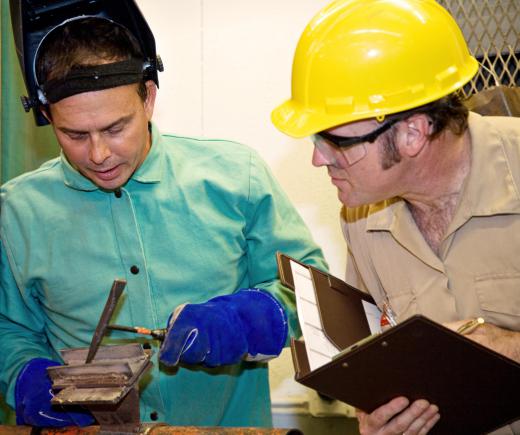Statistical quality control is the observation of variables of a manufacturing process over time and the application of statistical analysis of those variables to define operating windows that yield lower defect products. This method is used primarily for manufacturing lines rather than chemical processing equipment, though it is valid for both. Three key components of the methodology include control charts, continuous improvements and designed experiments.
Manufacturing lines often do not have a feedback loop as chemical processes might. In a chemical plant, the output of the process can be continuously monitored, and the conditions of the upstream reactants or reaction conditions can be changed to swing the process back to ideal conditions. Such instantaneous control is especially necessary for reactions that become dangerous when allowed to go to extremes. Manufacturing lines are often a series of unconnected machine operations run by a number of different operators, and inspection of the product is done at the end of the production line — off-line and often several hours or longer behind the manufacturing line itself. There is little opportunity for correction.

The major feature of statistical quality control is that instead of measuring defects and adjusting operating parameters to avoid them, the manufacturing engineer measures operating parameters to determine the statistical properties that the process exhibits over time. Variations in a parameter that are determined to fall within normal variations of the process are called common-cause variations. After studying one or more variables, the quality engineer may discover a variable that correlates well with the defect level of the product or stage of processing.
This variable is a controlling variable and is then monitored and analyzed to determine normal fluctuations, average values and control limits beyond which defect frequency increases. Control limits are initially set for most operations at plus or minus three standard deviations from the mean. They are tightened as necessary and as data is accumulated. Should variation in this variable not account for all the variation observed in the final quality of the product, additional variables are screened.
The key variable is monitored continuously, preferably by the equipment operator. As long as the system is running within the control limits, the equipment settings are not changed. Once the parameter exceeds control limits then action is taken to bring the parameter back into limits. By consistently applying the principles of statistical quality control, the entire manufacturing line’s defect rate is decreased as variation in the process is reduced.
The use of control charts by operators is often the easiest first step of a statistical quality control system, and often the work ends at this step. Ideally, the other components are implemented as well. Continuous improvement refers to efforts to bring more and more of the process under statistical quality control, including upstream activities, such as raw material sourcing and pre-acceptance testing. Designed experiments are the responsibility of the quality control engineer to determine physical explanations for the statistical variation that is observed. By having statistical data to predict outcomes, the investigation into the cause of defects is conducted in a systematic manner.
